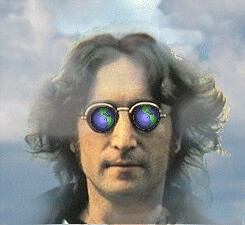For this week's Round Robin Photo Challenge,
Symbols, as suggested by Ruth of
Scrabblequeen, I initially thought of religious symbolism. Here's just one example:
Deacon Michael Meyers lights the Advent Wreath
In the Roman Catholic and Episcopal churches (at least), the four week "season" leading up to Christmas is known as Advent, symbolized by the Advent wreath. Unlike the wreath on your door (or my alcove wall) at Christmas, it hangs horizontally. On Sundays it is lowered so that a priest, deacon or subdeacon can light one or more of the four candles on top of the wreath, one for each week. (One candle is lit the first week, two the second, and so on.) Three of the candles are purple, but one is rose colored.
Each part of the Advent wreath has
its own symbolic meaning. The wreath itself, like most Christmas wreaths, is made of evergreen branches, symbolizing eternal life, since evergreen needles don't die with the autumn leaves. An advent wreath, again like many Christmas wreaths, may have red holly berries, symbolizing the blood of Christ. The candles represent the four weeks of Advent, a time to repent (literally to "think again") in preparation for Christmas. As more candles are lit, the Light of the World draws closer. The violet color of the three candles is the color of penitence. The rose candle, lit on the third Sunday (Gaudete Sunday, "Gaudete" being the Latin word for "rejoice"), symbolizes an element of rejoicing in the midst of our preparation.
And now you know more than you ever wanted to know about Advent wreaths, right?
The other symbols I thought of were the pictographic and color-based symbols of traffic signs - the red that means stop and green that means go (
Starman thought that yellow meant "go very fast"), and most especially the shapes we recognize as meaning "Walk"...
...and "Don't Walk"...
...and similar symbols meaning "Pedestrian Crossing" and so on. Such symbols are a big factor in making the streets safer, because we can read the symbols faster than the words they represent. But photographically, they're kind of boring, aren't they? Let's move on to a street sign that symbolizes much more than is printed on it. Here it is:
John bought this retired road sign from US Route 66 in Oklahoma, as I recall, on our big trip up and down the country (plus a bit of Canada) in 1986. We had been watching the 1960-1964 tv series
Route 66 on Nick at Nite, and I was going to write a book about both the tv show and the road that inspired it. But U.S. 66 had been decommissioned by the Federal government, on the theory that it had been superseded by the Interstate Highway System and was consequently no longer needed. Towns and cities unlucky enough to be on Route 66 but without an exit off I-10, I-40 or any other Interstate, were bypassed and struggled to survive. A truck stop owner in New Mexico told me that each year, more towns fell off the Rand McNally road maps as their populations fell below the threshold for inclusion.
(Okay, so I only took two or three of these photos. But I did the editing!)
So what does a Route 66 sign symbolize? It's a symbol of the Open Road, the two-lane blacktop that could take you "more than two thousand miles all the way," or to the next adventure, like the adventures of Tod and Buz, on some obscure piece of classic American real estate. It symbolizes Roadside Americana, like the Buffalo Ranch and motels made from metal teepees. It symbolizes the call of the West, the Mother Road that the Joad family followed from the Dust Bowl to California. It represents that trip we took in 1986, the only time in our adult lives when we had no obligation to hold down a job and pay the rent or the mortgage.
End of the Road: the unedited version from 1986.
Most of all, it represents a time gone by, a time that was already starting to fade away as writer Stirling Silliphant drove around the country and wrote about the adventures of two guys and a car, and Martin Milner, George Maharis and (later) Glenn Corbett filmed those adventures on location. When we drove the old route in 1986, it was a patchwork of state routes called 66, which had a tendency to dead-end with little or no warning. The most memorable case was when it petered out at a cemetery, at which a cow was grazing. We thought that was a perfect symbol of Route 66 as it existed by then: quirky, picturesque, and dead, but with life still hanging on where it had been.
Added:
More on Route 66: there is an Historic Route 66 designation now, but back when we were driving it there wasn't. The signs for it are sporadic, and it's basically a collection of state routes where the original highway was. The highway itself did not have a completely stable route over its long history, and is not only about 85% drivable. The good news is that interest in Route 66, with an historic preservation society, travel guides and so on, have saved some businesses from the brink of extinction. More info here:
National Historic Route 66 Federation
Wikipedia entry
Now let's see what other symbols the Robins have found to show us!
Linking List
as of Saturday, December 18th at 8:35 PM
Ruth - Posted!
The Scrabblequeen Knits, Too
http://scrabblequeen.wordpress.com
Karen - Posted!
Outpost Mâvarin
http://outmavarin.blogspot.com
Jama - Posted!
Sweet Memories
http://mummyjam.blogspot.com
Monica - Posted!
Shutterly Happy
http://monica-frameofmind.blogspot.com/
Linda - Posted!
Mommy's Treasures
http://mommystreasures.blogspot.com
gMarie - **Welcome, new participant!**
gMarie
http://gmariesews.blogspot.com
Halie - **Welcome, new participant!**
My Memoirs
http://lifemomentsmemories.blogspot.com
Krista - Posted!
Through the Eye of my Camera
http://ourhomeschoolinthewoods.blogspot.com
Gattina - Posted!
Keyhole Pictures
http://gattina-keyholepictures.blogspot.com/
Manang Kim - Posted!
My Photography in Focus
http://mgahulagwayko.blogspot.com
Karen




























